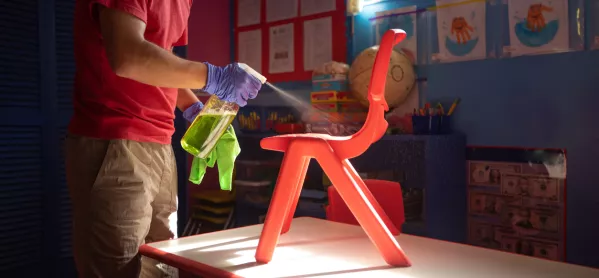Recently a letter from my son’s school found its way past the scrum of maskless parents at the gate to announce that a class had been advised to isolate in response to a positive coronavirus test. It’s the same story all across the country.
Sending pupils home is the last line of defence in a battery of protective measures that schools have been employing since they were reopened in September.
I’ve been in a few schools since they returned from lockdown and, let’s be clear, they don’t all fight the pandemic equally. While they have a common goal - a genuine desire to keep their children safe - some schools are more effective than others.
Coronavirus: Why some schools are safer than others
The school I’ve felt the safest at has insisted on masks in the corridor from the very beginning, an act the government has only just made a nationwide regulation.
This school, which I’ll imaginatively call School A, begins each lesson with a strict adherence to a seating plan, so if a child comes down with Covid-19 their immediate neighbours in class can be informed. And it ends it with a five-minute swabbing of desks.
Exercise books aren’t touched for three days. The teachers don’t cross a taped line on the floor without a mask, and all are issued with plastic visors.
Lunchtimes and breaks are staggered so year groups don’t mix, and the classes move through a one-way system in “bubble groups”. The staff even wear face masks in the staffroom, unless they’re eating, and are encouraged not to touch one another’s belongings.
Acting as though Covid isn’t happening
On the opposite side of the spectrum is School B, which acts as though 2020 isn’t happening. Yes, there are one-way corridors and sanitisers that smell of tequila at the doors, bubble groups in place and fire exits in use. But the general attitude is one of blithe denial.
The children all share the same lesson changeover, five times a day, and the resultant crowds at the exits would get a town-centre protest closed down. Safety feels optional, or an afterthought, and this dismissive attitude filters down to the students, who often resist the basic act of washing their hands.
My guess is that most schools fall somewhere between these two approaches.
I was listening to a staffroom of teachers (that’s an official collective noun, by the way) talking about the situation recently. These teachers exhibited the kind of tiredness that usually infects staff at the tail end of the year, after two and a half months of getting their students up to speed, and testing them like crazy to ensure there’s enough baseline data on file to avoid last summer’s exam grade fiasco.
And, on top of everything, mugs have vanished from the staffroom and the coffee confiscated (unions have been informed). So we’ll forgive them any weariness or pessimism.
When looking after yourself isn’t enough
One member of staff was complaining that her students didn’t care about social distancing. The response of another stayed with me. “I do all my own stunts,” she said.
She went on to explain that safety measures are only as good as an individual desires them to be. Unless a child runs at you and coughs in your face, it’s not impossible to stay reasonably safe, she declared.
She always ventilates her room by opening a window above her desk, high up, so the air isn’t just blown “downwind” past her. The chances are the children won’t even notice a window that’s only open a couple of centimetres, even if it’s freezing outside.
“Don’t turn on the air conditioner,” she insisted, while sanitising her hands like Lady Macbeth. “It regurgitates the same air you’re all breathing. And stay at least a metre away from the children. If you absolutely must go among them, wear a mask.”
All of this was good advice, but the more I thought about this “own stunts” remark, the more it seemed off. The most important thing, surely, is that these actions are translated, and with respect, to the children. Teachers can do their own stunts, but they also have a duty to keep the rest of the cast safe.
The sheer weight of what schools are trying to do at the moment can sometimes seem overwhelming, but I believe most are doing the best they can.
What separates School A from School B is the difference between a gracious, caring school-wide ethos and the “every man for himself” attitude that creates those scrums at the exits. We teach children to do better by doing better ourselves.
And then, maybe, some of those children might even persuade their parents to wear masks at pick-up time.
Paul Read is a teacher and writer based in East Sussex





